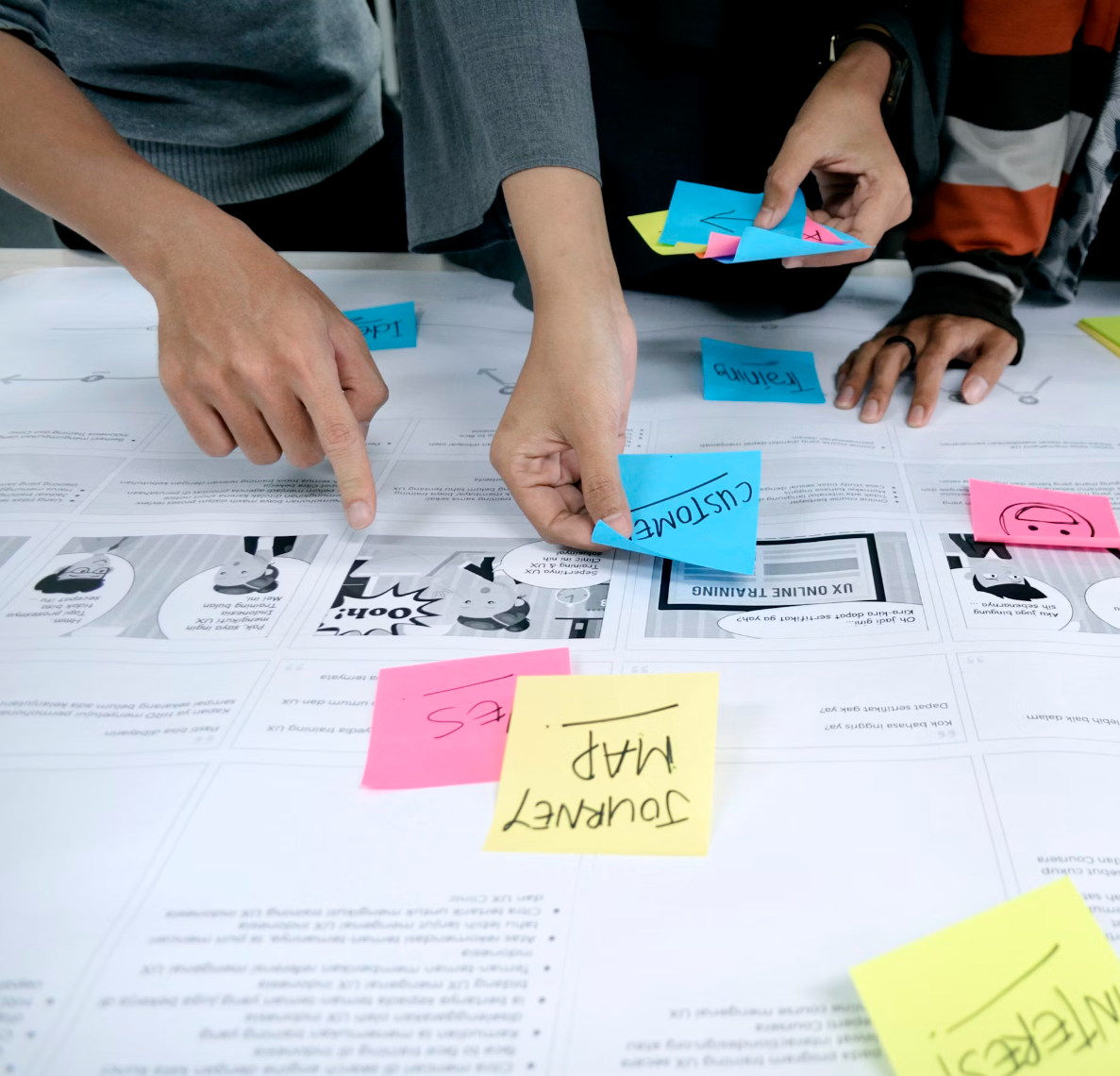As part of an online event hosted in March 2023 I recorded a conversation with Jerry Angrave (author of ‘The Journey Mapping Playbook’ and founder & CEO of Empathyce, UK) about customer journey mapping.
You can watch it, here:
What is Customer Journey Mapping?
Customer journey mapping (CJM) is a visual tool that allows us to understand our customers better. Essentially, it is a visual storyline of the engagement that a customer has with a particular service, brand, or product.
It forces us to step back from our day-to-day business and look at our customer’s experience. From that, we can identify what we could do better and what we are doing great. This feedback allows brands to improve on certain areas, and increase the publicity of the areas that are thriving.
How to get started with customer journey mapping?
The first piece of advice is to buy Jerry’s book, ‘The Journey Mapping Playbook’. It’s a practical guide to preparing and facilitating customer journey mapping. As Jerry highlighted in our conversation, it covers how to:
- Identify your brand’s key issue(s)- This could be something that you notice your customers complaining about regularly. The trick is to really hone in and focus on something you want to put your efforts into.
- Identify the persona that you are targeting- This is about how your brand/product/service fits into their lives. So, it is less about identifying basic demographics, and more about their lifestyle in relation to your brand.
- What do they do? If they are B2B, what job role are they in?
- What do they need and why do they need it?
- What is their ideal outcome after interacting with you?
- What are their fears, hopes and expectations?
- Look at the journey of that customer- You may want to focus on one aspect, such as onboarding, invoicing, or marketing- depending on what you offer.
- Set up a workshop with people from different parts of your business- If you are a large business, try to get as many people from as many different departments as you can. If you are a small business or the sole person working at that company, that is perfectly fine. Just grab a whiteboard and a few pens, and work with what you have.
- Ready, set, go! Once you have everyone necessary in one room, and a key issue to focus on, you are ready to begin understanding your brand from your customer’s eyes.
I have my workshop set up. What do I do now?
Setting up workshops may be slightly daunting, especially if it is not something you have done before. But, here are a few tips to ensure that it is as successful and productive as possible:
- Start by sharing stories around the room, both good and bad experiences with a service and/or product that each person has had recently. Then, build upon each story and discuss whether that could happen at your company.
- Discuss the persona and the key issue(s) so that everyone is on the same page.
- Break down the customer journey of the stage you are focusing on ideally to around 4-5 steps.
- Get everyone in the room to write down what they think the answer is to each question you propose, at each step. Then, open up the room for discussion.
- If you have time, at the end of the workshop, look at each step and try to understand what are the issues that your organisation has. Surface the specific issues that relate to that part of the customer journey.
- Do you have data for each part of the customer journey? E.g. clicks, customer service requests, website drop-off. This may help your discussion.
- When you draw the workshop to a close, ask people to vote for the answers they think are the priority. From there, you can see the key issues that people from different departments think are the most important.
This first workshop should hopefully be one of many. The participants will want to see what happens next so make sure you keep them updated with the next steps. Then, re-group and focus on different areas, different journeys and even different personas if you have a multi-level business.
Why is Customer Journey Mapping useful for social media?
Customer journey mapping is highly useful for most, if not all aspects of marketing. For social media, in particular, when we understand the journey that a customer goes on, we can make our social media content more relevant and impactful.
- When inviting co-workers, let them know how it will benefit them and their department. For example, if you are inviting someone from the finance team, discuss how the improved understanding of your customers will benefit the financial well-being of the company. Make it relevant to their world.
- At the start and the end, if you can get someone from the senior team to say a few words emphasising how beneficial the workshop is, it may highlight the importance of the task at hand.
- Keep the energy levels high. You are likely to lose engagement and motivation if your energy levels start to drop. Provide snacks and allow time for breaks.
Further workshop tips
- Start by sharing stories around the room, both good and bad experiences with a service and/or product that each person has had recently. Then, build upon each story and discuss whether that could happen at your company.
- Discuss the persona and the key issue(s) so that everyone is on the same page.
- Break down the customer journey of the stage you are focusing on ideally to around 4-5 steps.
- Get everyone in the room to write down what they think the answer is to each question you propose, at each step. Then, open up the room for discussion.
- If you have time, at the end of the workshop, look at each step and try to understand what are the issues that your organisation has. Surface the specific issues that relate to that part of the customer journey.
- Do you have data for each part of the customer journey? E.g. clicks, customer service requests, website drop-off. This may help your discussion.
- When you draw the workshop to a close, ask people to vote for the answers they think are the priority. From there, you can see the key issues that people from different departments think are the most important.
This first workshop should hopefully be one of many. The participants will want to see what happens next so make sure you keep them updated with the next steps. Then, re-group and focus on different areas, different journeys and even different personas if you have a multi-level business.
Why is Customer Journey Mapping useful for social media?
Customer journey mapping is highly useful for most, if not all aspects of marketing. For social media, in particular, when we understand the journey that a customer goes on, we can make our social media content more relevant and impactful.

